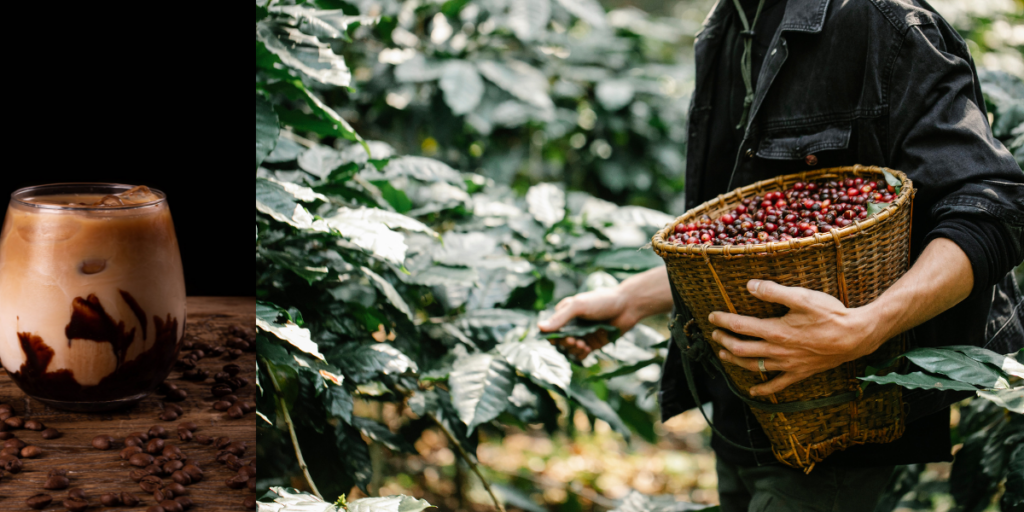Coffee is more than just a popular beverage; it is a global cultural phenomenon. From the bustling streets of coffeehouses in Europe to the serene plantations of Latin America, coffee holds a special place in the hearts of people around the world. In this article, we will embark on a journey to explore the diverse flavors, preparations, and traditions associated with coffee across different countries and regions. Join us as we delve into the rich tapestry of international coffee culture.
Ethiopia: Birthplace of Coffee and its Distinctive Flavor
Our coffee journey begins in Ethiopia, the birthplace of coffee. Ethiopian coffee is known for its unique flavors, often exhibiting floral and fruity notes. The traditional Ethiopian coffee ceremony is a cultural ritual that involves roasting coffee beans, grinding them by hand, and brewing them in a jebena, a traditional clay pot. The ceremony is a social occasion, bringing people together to savor the rich and aromatic coffee.

Italy: The Art of Espresso and Traditional Espresso Beverages
Italy is synonymous with espresso, a concentrated form of coffee. Italian espresso is known for its rich, full-bodied flavor and the signature crema that forms on top. Traditional Italian espresso beverages, such as cappuccino and macchiato, are prepared with precision and balance, combining espresso with steamed milk in varying ratios. The Italian coffee culture embodies a sense of style and sophistication that has influenced coffee traditions around the world.
Turkey: The Time-Honored Ritual of Turkish Coffee
In Turkey, coffee holds a significant place in social gatherings and hospitality. Turkish coffee is prepared by boiling finely ground coffee beans with water and sugar in a small pot called a cezve. The resulting coffee is rich, strong, and served in small cups. The preparation and drinking of Turkish coffee are steeped in tradition and often accompanied by delightful sweets, creating a cherished cultural experience.
Colombia: The Richness of Colombian Coffee
Colombia is renowned for producing high-quality coffee with a rich flavor profile. Colombian coffee is often described as smooth, balanced, and with a pleasant acidity. The country’s coffee regions, such as Huila and Antioquia, offer ideal conditions for cultivating Arabica beans. Colombian coffee farmers take great pride in their craft, using sustainable practices to ensure the finest beans reach coffee lovers worldwide.
Vietnam: The Exotic Blend of Vietnamese Coffee
Vietnamese coffee stands out for its unique blend of flavors and preparation method. Traditionally brewed using a small metal filter called a phin, Vietnamese coffee combines dark, robust coffee with sweetened condensed milk. The result is a smooth and indulgent beverage with a hint of sweetness. Vietnamese coffee culture is deeply ingrained in daily life, with locals often enjoying their coffee at sidewalk cafes, watching the world go by.
Japan: The Art of Pour Over Coffee
Japan’s coffee culture is marked by precision and attention to detail. Pour over coffee, known as “hand drip” coffee in Japan, has gained popularity for its meticulous brewing process. Baristas pour hot water over coffee grounds, allowing it to slowly drip into the cup, resulting in a clean and nuanced flavor. Japanese coffee shops emphasize quality and presentation, creating an elevated coffee experience.
Brazil: The Flavorful World of Brazilian Coffee
As the largest coffee producer in the world, Brazil offers a diverse range of coffee flavors. Brazilian coffee is often associated with medium to full body, low acidity, and nutty or chocolatey undertones. The country’s coffee plantations, located in regions like Minas Gerais and São Paulo, showcase the scale and innovation of coffee production.
Brazilian coffee is often associated with medium to full body, low acidity, and nutty or chocolatey undertones. The country’s coffee plantations, located in regions like Minas Gerais and São Paulo, showcase the scale and innovation of coffee production. Brazilian coffee traditions, such as the popular cafézinho (a small, strong coffee), highlight the warm and welcoming nature of Brazilian hospitality.
Ethiopia: Unveiling the Intricacies of Ethiopian Coffee Ceremony
Returning to Ethiopia, we delve deeper into the Ethiopian coffee ceremony, an integral part of the country’s cultural heritage. The ceremony involves a series of elaborate steps, including roasting green coffee beans, grinding them by hand, and brewing the coffee in a jebena. The aroma and the process of the ceremony reflect the significance of coffee in Ethiopian society, where it is considered a symbol of friendship and community.
Australia: The Rise of the Flat White
Australia has contributed its own unique coffee culture to the world. The flat white, a velvety-smooth espresso-based drink topped with microfoam, has gained popularity globally. Australians take pride in their coffee expertise, valuing the perfect balance of espresso and textured milk in their beverages. The vibrant coffee scene in cities like Melbourne and Sydney showcases the country’s passion for specialty coffee and innovative brewing methods.

United States: The Evolution of Coffee Culture
In the United States, coffee culture has evolved significantly over the years. From the rise of specialty coffee shops to the prominence of artisanal roasters, the country embraces a diverse range of coffee preferences. The influence of Italian espresso culture is evident in the popularity of drinks like lattes and cappuccinos, while the growth of the third wave coffee movement emphasizes the importance of quality sourcing, roasting, and brewing techniques.
Conclusion
Coffee is a global language that connects people from different corners of the world. The flavors, preparations, and traditions associated with coffee vary significantly, reflecting the diverse cultures and customs of each region. From the birthplace of coffee in Ethiopia to the iconic espresso culture of Italy, and the innovation of brewing methods in Japan and Australia, coffee transcends boundaries and continues to evolve.
Exploring the international coffee scene offers us a glimpse into the rich tapestry of flavors, rituals, and experiences that coffee brings. Whether it’s savoring the floral notes of Ethiopian coffee, indulging in the sweetness of Vietnamese coffee, or appreciating the craft behind a perfectly brewed cup in a specialty coffee shop, each sip tells a story.
As we navigate the global coffee landscape, let us embrace the diverse flavors, preparations, and traditions that make coffee an extraordinary beverage. It is through this exploration that we deepen our appreciation for the artistry, culture, and community that coffee fosters worldwide. So, raise your cup, take a sip, and celebrate the rich tapestry of international coffee culture.


